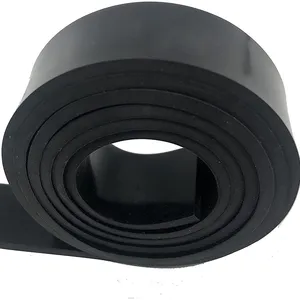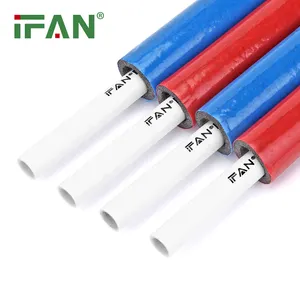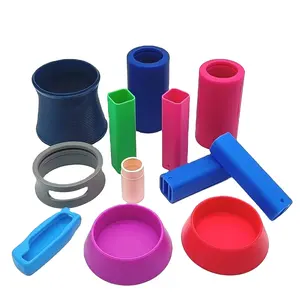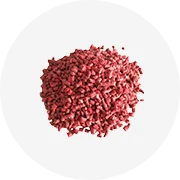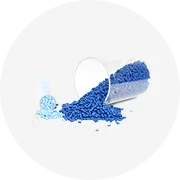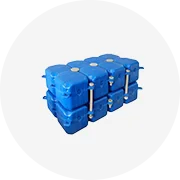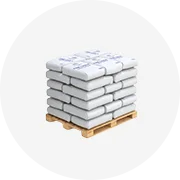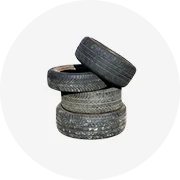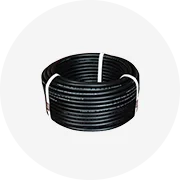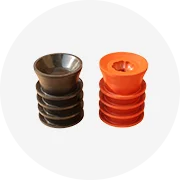Popular in your industry













































































Top categories
About hdpe pellets
In an era where sustainability intersects with technology, high-density polyethylene (HDPE) pellets emerge as a transformative resource for product manufacturing. These tiny granules pack a powerful punch, offering remarkable strength, durability, and versatility. As businesses seek materials that align with both performance and environmental stewardship, HDPE pellets stand out as a superior choice. This article delves into the world of HDPE pellets, exploring their unique features, benefits, and the vast array of applications they empower. From the high-performance demands of industrial applications to the nuanced needs of consumer products, HDPE pellets offer a solution that is both efficient and sustainable. Join us as we uncover the transformative potential of HDPE pellets in modern manufacturing.
Understanding HDPE Pellets
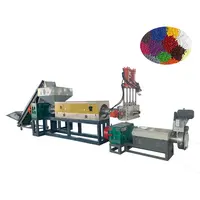
High-density polyethylene, or HDPE, is a thermoplastic polymer that's crafted from the monomer ethylene. Recognized for its substantial strength-to-density ratio, HDPE's robustness is due to its minimal branching, which bolsters intermolecular forces and tensile strength. This characteristic also contributes to HDPE's higher specific strength, making it harder, more opaque, and capable of enduring higher temperatures for brief periods compared to its low-density counterpart, LDPE.
The resilience of HDPE extends to its resistance to a variety of solvents, making it a challenge to glue but ideal for welding to create strong joints. The properties of HDPE can be influenced by the manufacturing process, with international standardized testing methods determining these properties for specific applications. For instance, rotational molding uses the notched constant tensile load test to gauge environmental stress crack resistance.
HDPE's versatility is evident in its wide range of applications, from pipes suitable for drinking water to durable consumer goods. The polymer's structure and properties are shaped by the synthesis method, whether it's Ziegler-Natta polymerization or the Phillips slurry process, each affecting the degree of branching and molecular weight. Post-synthesis processing further tailors HDPE's properties, such as crystallinity, to suit diverse commercial needs, from injection and extrusion molding to blow and rotational molding for various products.
Types of HDPE Pellets on Alibaba.com
Alibaba.com showcases a diverse range of HDPE pellets suitable for various manufacturing needs. These pellets come in different forms, such as virgin granules for applications demanding purity and performance, and recycled resin for more cost-effective and environmentally friendly solutions. The HDPE pellet selection includes specialized options like flame retardant masterbatches, color masterbatches for 3D printing filaments, and high-density pigment content masterbatches for plastic products. For industrial applications, there are grades designed for blow molding, offering good processability, and pipe-grade pellets that provide the necessary durability for infrastructural use. The platform also features HDPE sheets and panels, including UHMWPE sheets for synthetic ice rinks and food-grade cutting boards, highlighting the material's versatility. Each type of HDPE pellet is tailored to meet specific industry standards and usage requirements, ensuring that businesses can find the appropriate material for their product manufacturing processes.
Features of High-Quality HDPE Pellets

High-density polyethylene (HDPE) pellets are renowned for their robust strength-to-density ratio, a defining feature that makes them suitable for a wide range of applications. These pellets are formed from HDPE, a thermoplastic polymer with a density ranging from 930 to 970 kg/m³. The strength of HDPE is significantly higher than that of low-density polyethylene (LDPE), primarily due to its minimal branching, which results in stronger intermolecular forces and tensile strength. This characteristic also contributes to HDPE's higher specific strength, making it harder, more opaque, and capable of withstanding higher temperatures for short periods, up to 120 °C.
The resistance of HDPE pellets to various solvents is another key feature, alongside their difficulty to glue, which necessitates specialized welding techniques for joint formation. The properties of HDPE pellets can be influenced by the molding process used during manufacturing, which is determined by international standardized testing methods. For instance, the notched constant tensile load test (NCTL) is utilized in rotational molding to assess the environmental stress crack resistance of HDPE.
HDPE pellets are also used in applications where they form a chemical-resistant barrier in sanitary landfills, preventing soil and groundwater pollution. Their versatility extends to the pyrotechnics industry, where they are preferred for mortars due to their durability and safety. In the realm of packaging, HDPE's utility is evident in its widespread use for bottles and containers that resist oils, with a significant portion of global production dedicated to such items.
Benefits of Using HDPE Pellets in Product Manufacturing
HDPE, or high-density polyethylene, is a versatile material known for its strength-to-density ratio, which is highly beneficial in product manufacturing. Its molecular structure, characterized by a linear configuration with minimal branching, contributes to its robustness and moisture resistance. These properties make HDPE an ideal choice for creating durable goods. HDPE's recyclability is another significant benefit, as it supports environmental sustainability and allows for the material to be reused in various applications. The safety of HDPE is well-documented, with it being a preferred material for food and beverage containers due to its non-leaching characteristics. This ensures that products made from HDPE pellets are safe for consumer use, as they do not transmit chemicals into food or drinks. Moreover, HDPE's resistance to various chemicals makes it suitable for packaging a wide range of products, further enhancing its utility in manufacturing. The fact that HDPE products are BPA-free adds to their appeal, ensuring that they meet health and safety standards for consumer goods.
Applications of HDPE Pellets in Various Industries
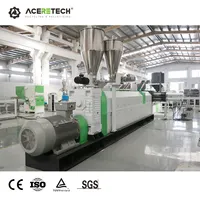
HDPE pellets, derived from the recycling of post-consumption bottles, are a cost-effective and resilient material that serves as an effective barrier against moisture. These pellets are versatile in their applications, being utilized in the blowing, injection, and extrusion processes to create a variety of products. Common uses include the production of containers for non-edible items such as personal care products and household cleaners, as well as automotive fluids like motor oil and antifreeze. Beyond bottle manufacturing, HDPE pellets are instrumental in producing pipes, ceramic tiles, buckets, boxes, flowerpots, films, and various types of containers, showcasing their wide-ranging utility across different manufacturing sectors.
How HDPE Pellets Enhance Product Durability and Efficiency
HDPE pellets contribute significantly to the durability and efficiency of products. Their inherent chemical resistance ensures longevity, even when in contact with various substances, making them suitable for containers and tanks in diverse pH environments. The material's resistance to moisture absorption is crucial for outdoor applications, preventing degradation and maintaining structural integrity over time. Additionally, HDPE's lightweight nature, compared to heavier materials like aluminum, offers substantial benefits in applications where weight reduction is essential, without compromising on strength. The UV-resistant formulations of HDPE pellets further enhance product life, especially for items exposed to sunlight. These pellets can be easily machined and welded, allowing for the creation of durable, strong welds and larger, robust designs. Such features make HDPE pellets an excellent choice for manufacturing a wide range of durable and efficient products across various industries.
Choosing the Right HDPE Pellets for Your Business on Alibaba.com
When selecting HDPE pellets for your business, it's essential to consider the specific needs of your products and processes. The HDPE pellets mentioned, with a size range of 3-4mm and a density of approximately 0.97g/cm3, cater to a variety of applications. These pellets are suitable for items requiring filling or added weight, such as toys and weighted blankets. The color consistency of the pellets may vary slightly, which is a natural occurrence between different batches. It's important to assess the volume requirements for your project, as the volume these pellets occupy is quantifiable, with 1kg filling approximately 1700 ml. For businesses looking to purchase in bulk, these pellets are available in a wide range of weights, ensuring that you can order the exact quantity needed for your manufacturing process. When choosing the right HDPE pellets on Alibaba.com, look for suppliers who offer customization in quantity to match your demand. While the original content suggests a competitive pricing approach, focus on the properties and compatibility of the pellets with your product requirements rather than price alone.
Sustainability and Recycling: The Environmental Edge of HDPE Pellets
Recycling HDPE plastics contributes significantly to environmental conservation. By repurposing HDPE containers, we prevent non-biodegradable waste from accumulating in landfills and save substantial amounts of energy. The process of recycling HDPE uses considerably less energy compared to producing new plastics from virgin materials. This reduction in energy consumption is crucial as it also lessens the reliance on fossil fuels, thereby mitigating pollution and the harmful impacts of resource extraction.
The transportation of recyclable materials also demands less energy than that required for standard waste, further minimizing the carbon footprint. By incorporating HDPE recycling into business practices, companies not only adhere to sustainability goals but also contribute to a circular economy where materials are reused, reducing the overall environmental impact. This sustainable approach can resonate with environmentally conscious consumers, potentially leading to enhanced customer loyalty and business growth.
Conclusion
HDPE pellets represent a nexus of strength, versatility, and sustainability in the manufacturing sector. Their superior strength-to-density ratio, resistance to chemicals and solvents, and ability to withstand diverse environmental conditions make them indispensable across various industries. From the creation of durable consumer goods to the development of robust industrial materials, HDPE pellets enhance product durability and efficiency. Alibaba.com's extensive selection caters to specific industry standards, ensuring that businesses can find the perfect match for their manufacturing needs. Moreover, the environmental benefits of using HDPE pellets, particularly in recycling, contribute to a greener, more sustainable future. By choosing the right HDPE pellets, companies not only optimize their products but also align with the growing global mandate for environmental responsibility. In conclusion, HDPE pellets are not just a material choice; they are a strategic decision towards a more efficient, durable, and sustainable business model.

